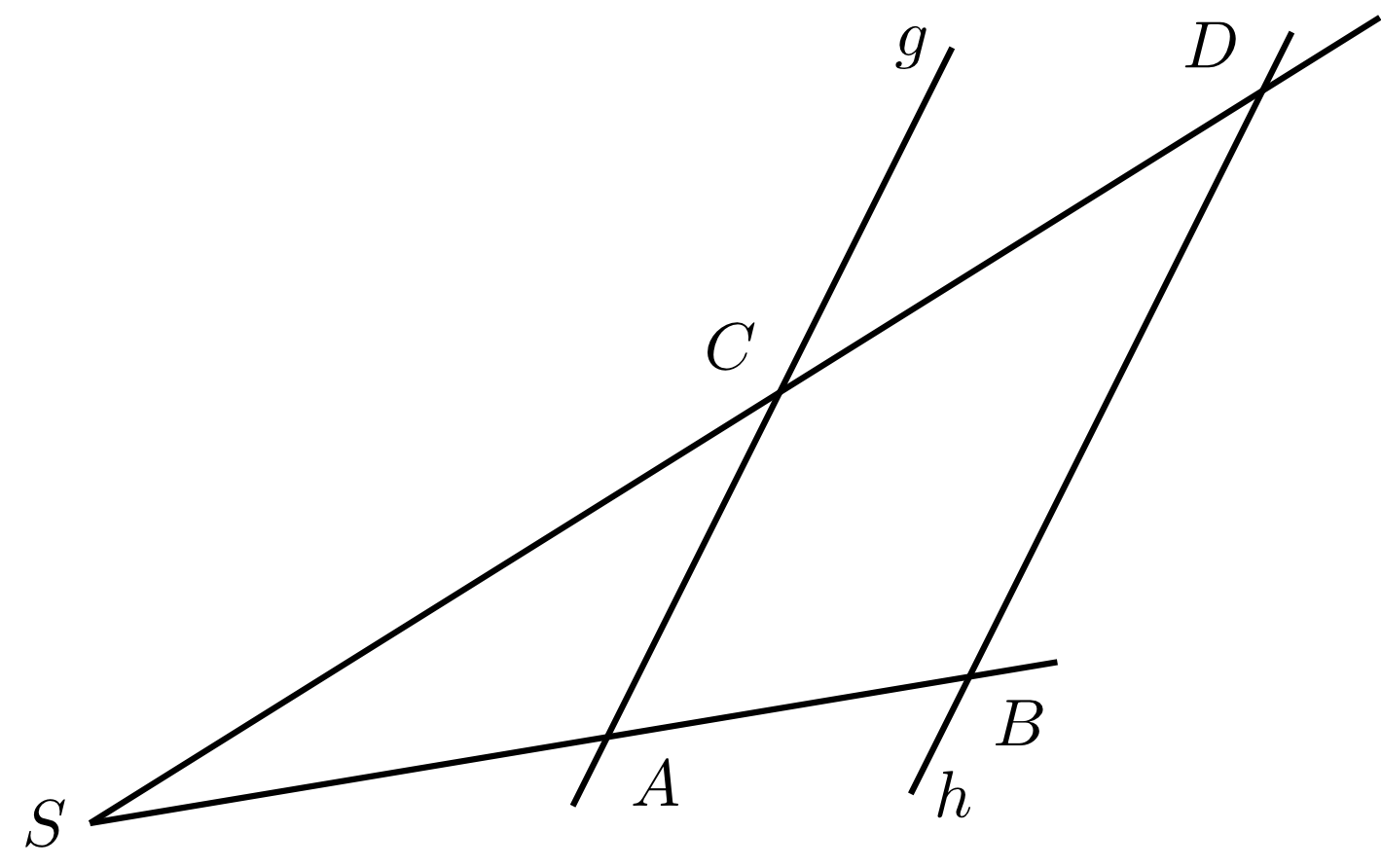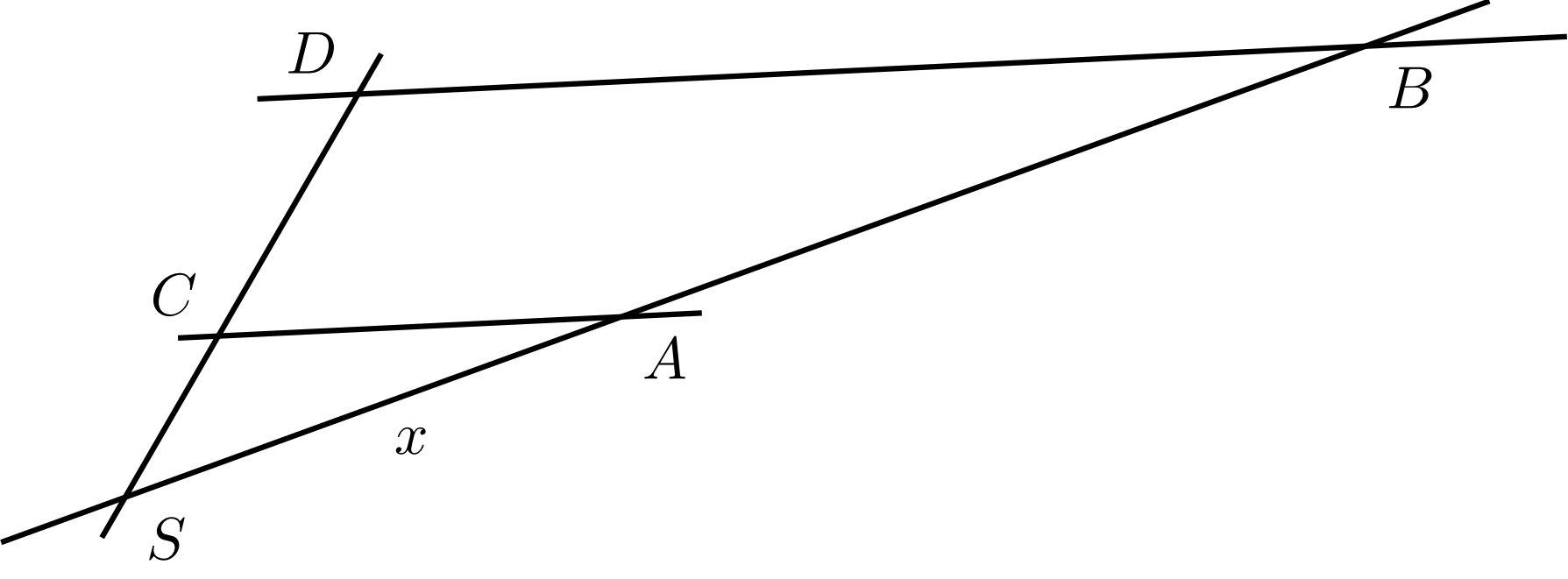Chapter 5 Geometry
Section 5.1 Elements of Plane Geometry5.1.3 Intercept Theorems
A pinhole camera provides a small image of the outside space. The ratio of the size of the image to the size of the object equals the ratio of the distance from the pinhole to the distance from :
Properties of images arising from uniform scaling can also be described by means of the intercept theorems (see also Figure 5.3.17).
What all examples applying the intercept theorems have in common is that rays (or lines) with an intersection point are intersected by parallel lines.
Intercept Theorems 5.1.4
Let be the common initial point of the two rays and proceeding through the points and , respectively. The point is on the ray and the point is on the ray . First, we consider the line segments between the points on the two rays and then the line segments between the rays.
|  |
If the lines and are parallel, the following statements hold:
- The ratio of the line segments on one of the two rays equals the corresponding ratio of the line segments on the other:
This can also be expressed in the form:
- The ratio of the line segments on the parallel lines equals the ratio of the corresponding line segments starting from on a single ray
This can also be expressed in the form:
where and .
The statements of the intercept theorems also hold if two lines intersecting in a point are considered instead of the two rays. An application example of this case is the pinhole camera mentioned above.
In this way, distances between points can be calculated without measuring the length of the line segments directly.
Example 5.1.5
Let four points , , , and be given. These points define the two lines and intersecting at the point . Furthermore, it is known that the lines and are parallel. Between the points the following distances were measured: , , and .
From this, the distance between and can be calculated. Let denote the required distance. Then, according to the intercept theorems, we have
from which
follows.
From this, the distance between and can be calculated. Let denote the required distance. Then, according to the intercept theorems, we have
from which
follows.
 Onlinebrückenkurs Mathematik
Onlinebrückenkurs Mathematik

